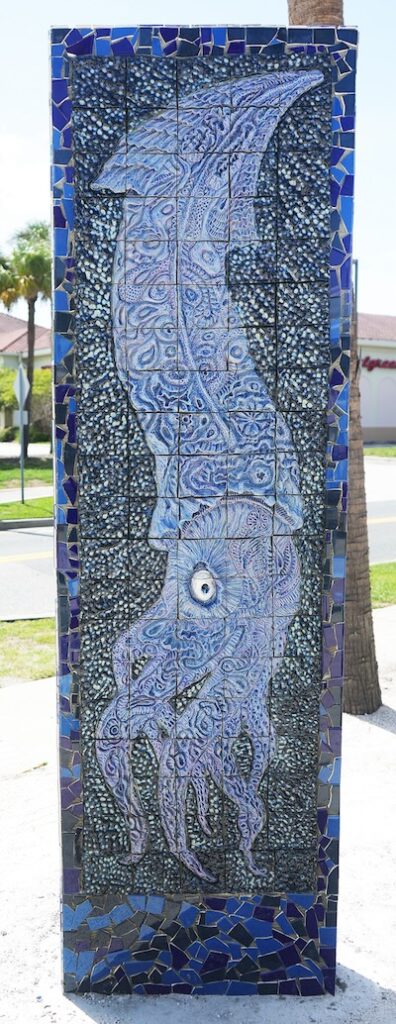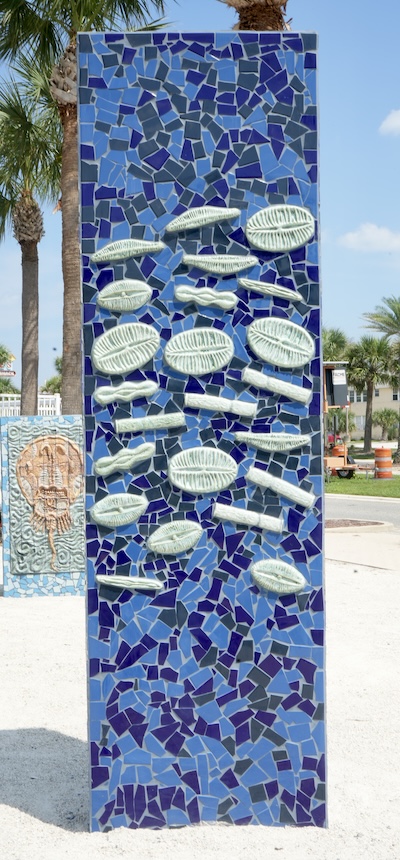Home » 2024 » Water Columns » Blake Escarpment | Squid


Xavier Cortada, “Blake Escarpment | Squid,” 108″ x 32″ x 8″, hand-carved, hand-glazed ceramic tile on concrete, 2024
(Water Columns series in Jacksonville Beach, FL)
Squid
One of seven ceramic tile works in the “Water Columns” installation, this piece represents the Blake Escarpment off Jacksonville Beach. It features the deep-sea squid, a critical prey species for large marine mammals, emphasizing the interconnectedness of ocean ecosystems and the need for conservation.
Story
Squid in this part of the ocean can live at depths of 2,600 feet or more. Squid play an important role in their food web as both predator and prey. Colossal sperm whales, at least three different types of beaked whale—Cuvier’s beaked whales, Blainville’s beaked whales, and Gervais’s beaked whales—as well as dwarf and pygmy sperm whales migrate seasonally through the region and dive deep to feed on the energy-rich squid.
Squids eat small fish, crustaceans, and sometimes even other squid. There are more than 300 species of squid, and they can all be found in every ocean!
Did you know that scientists use squids’ nerve fibers to study how the human brain works? The fibers are larger and easier to dissect, making them an excellent learning tool.
These creatures are an important food supply for larger marine animals. Without them, certain populations could face decline.
References
- Squid. National Geographic. (n.d.-b). https://www.nationalgeographic.com/animals/invertebrates/facts/squids
- Suatoni, L. (2024, April 15). The blake plateau: A Southern treasure. NRDC. https://www.nrdc.org/resources/blake-plateau-southern-treasure#:~:text=The%20Blake%20Plateau%20is%20an,%2C%20sea%20turtles%2C%20and%20swordfish.